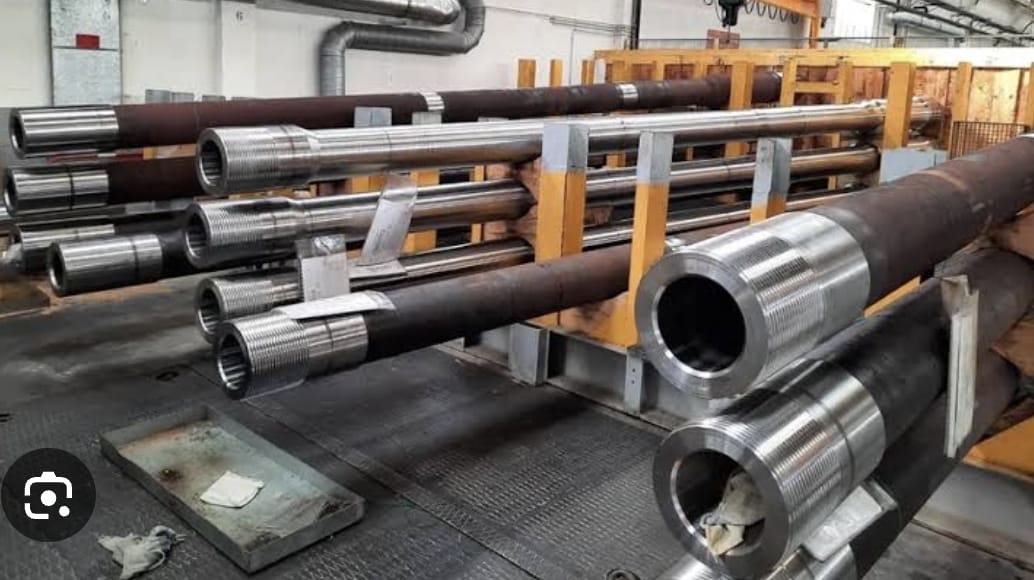
India’s Defence Industrial Mindset needs a Rethink - From Catching Up to Getting Ahead
November 25, 2025

Blog

India’s Military Industrial Complex (TASL’s Barrel Manufacturing Facility as a Strategic Catalyst)
Posted by admin
As India aspires to emerge as a major global power, it must invest purposefully in building a robust military-industrial complex. Such a system, underpinned by modern infrastructure, innovation, and efficient production capabilities, is essential not only to meet domestic requirements but also to enhance India’s stature as a responsible exporter of defence equipment.
The phrase “military industrial complex” often evokes the Cold War-era dynamics between the defence sector and government policy. However, for India, the focus must be on creating a strategic and sustainable ecosystem where defence production is integrated with national security goals. This entails significant improvements in infrastructure, policy frameworks, research and development, and private sector participation.
Infrastructure Investment. One of the foundational requirements for developing a military industrial complex is world-class infrastructure. This includes not just the physical infrastructure of factories, testing facilities, and logistics hubs, but also the softer infrastructure of skilled human resources, regulatory clarity, and digital capabilities. India has taken important steps in this direction, particularly under the ‘Make in India’ and ‘Aatmanirbhar Bharat’ initiatives. However, gaps remain.
Enhancing Firepower. A Barrel for the Future. A shining example of private sector capability in the artillery segment is Tata Advanced Systems Limited (TASL). In its bid to support the development of indigenous gun systems, TASL has significantly upgraded its manufacturing infrastructure to produce critical subsystems in-house. Ordnance, being one of the most important elements in any gun system is now to be developed at a cutting-edge barrel manufacturing facility at TASL’s Vemagal unit in Karnataka’s Kolar District.
This facility represents a strategic investment in India’s defence future. Equipped with advanced CNC machines for turning, deep-hole drilling, honing, and specialised equipment for rifling and autofrettage processes, it enables the production of world-class gun barrels. Machines from leading European manufacturers such as Thiot and Verinelli have been installed, underlining TASL’s commitment to global quality standards. Notably, the facility embraces Industry 4.0 technologies, including real-time production monitoring systems that ensure operational efficiency and consistency.
The capacity to produce any type of barrel from its raw blank provides India with a critical capability that has long been dependent on foreign suppliers. The plant’s futuristic setup and stringent quality assurance protocols ensure that each barrel meets the exacting standards required by modern artillery systems. In coordination with the Defence Research and Development Organisation (DRDO), this facility is well-positioned to support the mass production of the Advanced Towed Artillery Gun System (ATAGS) and other upcoming artillery platforms. This not only strengthens India’s artillery ecosystem but also reinforces the larger goal of building a self-sustaining military industrial base.
R&D, Innovation, and Strategic Autonomy. For India’s military industrial ambitions to succeed, synergy between research institutions and industry is essential. While the DRDO remains central to defence R&D, its collaboration with industry must become more agile and mission-oriented. TASL’s barrel facility shows what can be achieved when innovation is aligned with national goals. Investments in dual-use technologies, R&D incentives, and structured public-private partnerships can dramatically boost the sector. These would allow India not only to meet its domestic requirements but also to tap into the global defence export market, with systems like ATAGS and Pinaka already attracting international interest.
To sum up – creating a military industrial complex is not an end in itself but a means to achieve greater national resilience, economic growth, and strategic autonomy. India has the talent, ambition, and policy intent to build such a capability. What is needed now is a focused and sustained effort to improve infrastructure, streamline regulatory processes, and foster innovation across all levels of the defence sector.
TASL’s new barrel manufacturing facility is a testament to what can be achieved when vision meets execution. As India builds on such initiatives, it will not only strengthen its own defence preparedness but also contribute meaningfully to global peace and security, in line with its aspirations as a rising power.
Col Ashwani Sharma (retd), Editor
18 Replies to “India’s Military Industrial Complex (TASL’s Barrel Manufacturing Facility as a Strategic Catalyst)”
Leave a Reply
Search Blog
Categories
Popular Posts







Great to see the private sector coming forward to invest in building the defence industry in India. Noone can stop India in its march towards self reliance
Good news. Is it already functional? Should we not invest in more modern tech, as we already have DPSUs making gun barrels?
Thank you VB and Arun. The facility is ready and will soon be operational. The requirement of making gun barrels is immense, considering the huge arsenal that the Indian army maintains. TASL facility will help in making up deficiencies, plus it is a state-of-the-art facility which can meet requirements of the future as well
Who is making the ATAGS guns right now? How did Tata make the ATAG gun so far ?
I suppose your query is about the ATAGS gun tube? Bharat Forge and TASL have used gun barrels made by Bharat Forge so far. The TASL facility will add further capability within the country. Fortunately, there is DRDO to assist and guide them all
Nice piece. Hope the growing defence industry gets the orders from India and abroad.
Congratulations Ashwani. Enlightening and informative article. Glad to know India is catching up with world weapon industries.
Very encouraging to see private sector breaking the monopoly of Ordnance factories. Which private sector company is into aircraft engine designing and development.
Thank you, DD and Lalit, we are getting there, slowly but surely
Col Anil Nanda, veteran
Good to read this, in conjunction with Bharat’s Forge’s capabilities which were the first ever India for barrel manufacturing after they literally shipped one of the related Rheinmetall’s plants which was lying defunct in Europe. During our visits (from Rheinmetall) to Bharat Forge, we were hugely impressed of what BF had created.
But we all knew that barrel manufacturing from Bharat Forge would not be enough since the requirements of various calibre barrels in India is huge. This by TASL should complement to a huge extent
Col Ashwini Channan
My rusted memories recollect that the metallurgy to produce a tube that allows hot gases to propel a fairly heavy projectile across huge distances is a commendable technological achievement. Now that TASL joins Bharat Forge, our defence eco-system as far as artillery and tank guns are concerned, is now at par with the best.
Pratap Nair
Let’s hope that the barrel bursts, which plagued our T-90 tank barrels, are a thing of the past. I know this facility is not for tank barrels
This is a great achievement and a nice article, sir.
Whenever we have tie up for ToT with foreign partners, they invariably hold back the critical part/component/assembly. In case of artillery guns it is the barrel. While L & T has done great job in indigenising a lot of high tech defence products for the country, the K9 Vajra 155 MM Self Propelled Guns that they manufactured with ToT from a South Korean firm still had to use barrels that were imported as the OEM would not part with that critical tech. Similar limitations are there for aero engines as well as tank engines. The key is to indigenise such critical tech
Establishing manufacturing facility of Barrels is a commendable achievement with strategic vision. It will add teeth to our “Atmanirbhar Bharat” initiative and develop a competitive defence manufacturing eco-system in India.
TASL conceived the plan to make barrels in their Vernagal Unit in Kolar District a decade ago. The aim was to make barrels for the ATAGS which was in the development stage in 2015 and TASL was one of the production partner. As I was involved in the ATAGS project, I encouraged them to go ahead and saw the infrastructure. They took time to decide as they were not sure of the scales. I advised them to think big and look at the global demand over next two decades. TASL has taken time but with increasing non contact conflicts, scales of artillery and rocket systems will be on the rise. This infrastructure with ability to upgrade the why part of metallurgy and processing will find a huge demand in domestic and international market.
Thank you Sir, for your detailed comments. ATAGS programme and subsequent developments such as these owe gratitude to you as well. for your commitment and guidance to the programme.
Gen Mistry and Air Cmde Patil – I agree with you, and we need more such initiatives to achieve self reliance in defence
Thank you Ashwini for a very well written and revealing article Lt Gen JP is correct in placing it in context It was a deliberate and measured decision that was finally taken by the board With brand new machines for the complete cycle of manufacturing barrels, the system has the versatility to manufacture different caliber barrels at a later stage
Currently it will focus on the artillery 155 mm
It makes TASL a Gun OEM instead of a system integrator. This addition to indigenous manufacturing heralds a critical landmark for India.